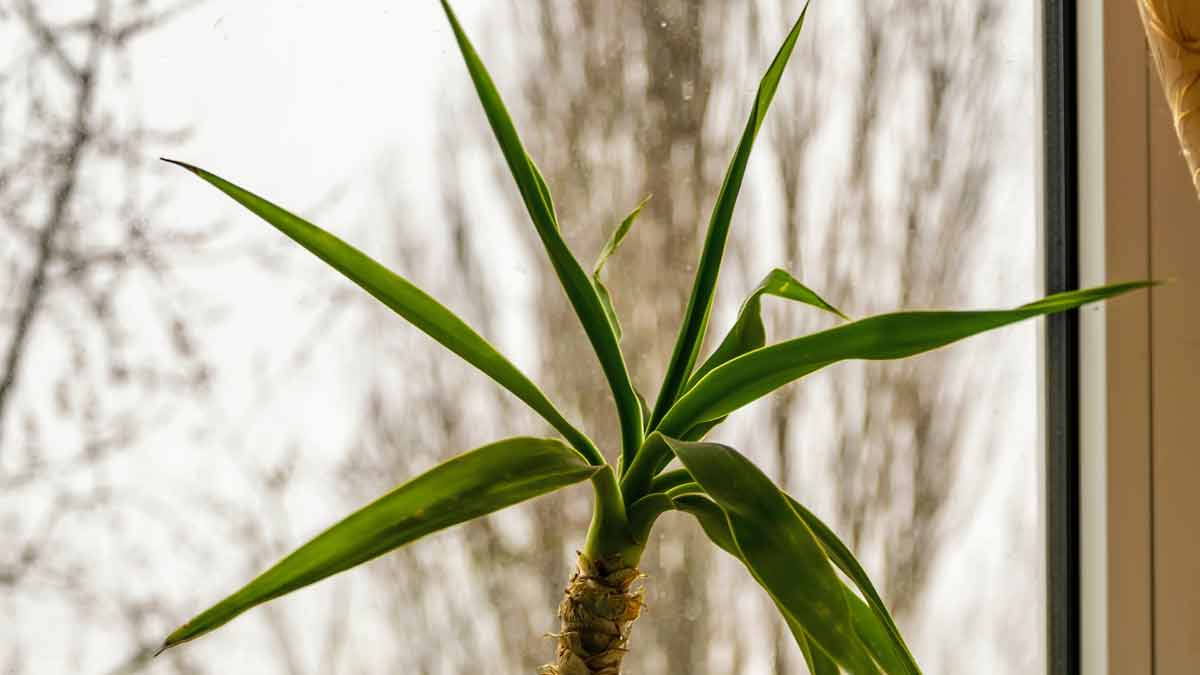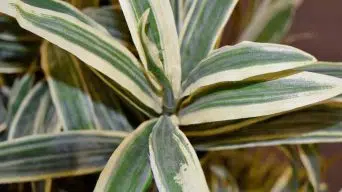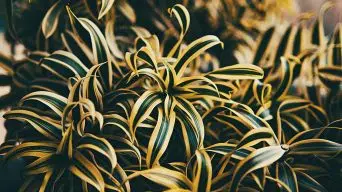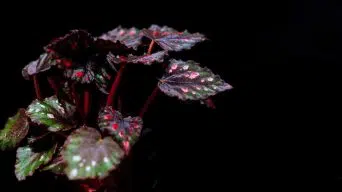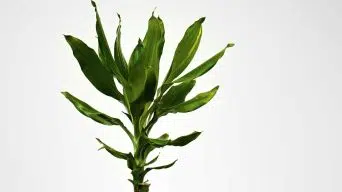Overwatering can harm Dracaena plants, causing soft brown leaves and trunk. To save an overwatered Dracaena, let it dry out, reduce watering, check for root rot, and repot with a better draining mix. Yellowing leaves may indicate overwatering and uniform yellowing on both top and bottom leaves can suggest severe overwatering.
If you’re a proud owner of a beautiful Dracaena plant, you know proper care is crucial for keeping your tropical treasure healthy and thriving.
Overwatering can be a common issue many plant enthusiasts face, leading to unsightly yellow leaves and even root rot.
In this step-by-step guide, we will walk you through identifying signs of overwatering and provide expert tips on how to nurse your Dracaena back to full health.
Identifying Signs Of Overwatering In Dracaena Plants
As you stroll through your lush indoor garden, you may notice something off about your Dracaena plants.
The leaves may look a bit yellow or discolored, or they may be drooping and wilting.
Upon closer inspection, you notice brown spots on the foliage and an unpleasant odor emanating from the soil.
These are all telltale signs of a common problem: overwatering.
While watering your plants is essential for their health, too much of a good thing can quickly turn disastrous.
In this case, it’s important to prevent root rot, moldy soil, and other issues that can harm your beloved Dracaena.
Discolored Or Yellowing Leaves
Discolored or yellowing leaves are among the earliest and most visible signs of an overwatered Dracaena plant.
This issue occurs when excess water in the soil leads to poor root aeration, depriving your plant’s roots of the necessary oxygen to function correctly.
As a result, leaves turn yellow as they struggle to receive adequate nutrients for photosynthesis and growth.
To help identify whether yellowing leaves are caused by overwatering, note any patterns on your plant.
If you observe that only the lower leaves are affected or that area closest to the soil appears more severely impacted, excessive moisture is likely at fault rather than other factors such as low humidity or inadequate light conditions.
Drooping Or Wilting Leaves
One of the most noticeable signs of an overwatered dracaena is drooping or wilting leaves.
When a plant receives too much water, it struggles to absorb oxygen through its roots, leading to stress and weakened overall health.
The excess water weighs down the leaves, causing them to appear limp and lifeless.
If you’ve recently watered your dracaena houseplant more frequently than usual or given it more water during each watering session, you might notice that the once vibrant leaves are now hanging low and looking unhealthy.
To remedy this situation, start by assessing the drainage system for your plant to ensure that excess water can easily escape from its container.
Decrease your watering frequency until you see improvements in your Dracaena’s leaf health.
Brown Spots On Leaves
Brown spots on dracaena leaves are often the first visible sign that your plant is suffering from overwatering.
These spots initially appear as small, watery lesions on the leaf surfaces before gradually progressing to larger areas of discoloration and decay.
To prevent further damage and encourage healthy growth in your dracaena plants, it’s essential to identify and address any underlying issues contributing to excess water retention.
Consider using pots with proper drainage holes or adding a layer of pebbles at the bottom for improved aeration.
Root Rot
Root rot is a severe problem for Dracaena plants, usually caused by overwatering.
This condition occurs when your plant’s roots can’t get enough oxygen because they are sitting in waterlogged soil.
Soft drooping leaves, yellowing leaves, and mushy swollen stems are clear signs of root rot in Dracaena plants.
To fix an overwatered Dracaena suffering from root rot, immediately remove the plant from its pot and thoroughly clean off all old soil from the roots.
Trim back any damaged or mushy roots that look unhealthy and discard them.
Let the plant dry out completely before repotting it using fresh soil with proper drainage holes to prevent future occurrences of this problem.
Moldy Soil
Moldy soil is a common sign of overwatering in Dracaena plants. Overwatering can cause the soil to become waterlogged, promoting mold growth and other harmful bacteria.
Moldy soil may appear green or white and have a musty odor.
Ensuring your Dracaena has proper drainage and isn’t sitting in standing water is essential to prevent moldy soil.
It’s also crucial to only water when the top inch of soil feels dry, as excess water can promote fungal growth.
If you notice mold growing in your plant’s soil, removing any affected areas immediately is best to replace them with fresh potting mix.
By taking quick action against moldy soil caused by overwatering in your Dracaena plant, you’ll be able to help restore its health and beauty into good shape–and avoid further issues down the road!
Foul Smell From the Soil
If you notice a foul smell coming from your Dracaena plant’s soil, it may be a sign of overwatering.
Excess water in the soil can cause the roots to rot and release an unpleasant odor.
To fix this issue, stop watering your plant immediately and follow our step-by-step guide on how to fix an overwatered Dracaena plant.
It is essential to address the problem quickly, as root rot can become fatal for your beloved houseplant.
Additionally, make sure to use well-draining soil and pots with adequate drainage holes in the future to prevent this problem from reoccurring.
How To Fix An Overwatered Dracaena Plant
As you gaze upon the once vibrant foliage of your beloved Dracaena plant, you realize with a sinking feeling that you’ve been overzealous in your watering efforts.
The telltale signs of overwatering are all too apparent – wilting, yellowing leaves and a sickly, drooping demeanor.
But fear not, for all is not lost.
You can nurse your Dracaena back to its former glory with a bit of know-how and some tender loving care.
Here we’ll walk you through the steps to fix an overwatered Dracaena plant, from assessing the damage to proper trimming techniques and repotting with fresh soil.
Cease Watering The Plant Immediately
If you notice signs of overwatering in your Dracaena plant, such as yellowing leaves or moldy soil, it’s crucial to stop watering it immediately.
Continuing to water an already overwatered plant can worsen the damage and lead to more severe issues like root rot.
Once you’ve stopped watering the plant, allow the soil to dry out completely before taking any further steps toward fixing it.
Depending on the soil’s saturation, this may take a few days or even up to a week.
Evaluate The Extent Of Damage And Remove The Plant From Its Pot
The next step in fixing an overwatered Dracaena plant is to evaluate the extent of damage and remove it from its pot.
Carefully lift the plant from its pot, being mindful not to cause further damage.
Once removed, inspect the roots for signs of rot or decay.
If you notice any black or brown soft spots on the roots, use a clean cutting tool to trim them off until you reach healthy tissue.
After trimming damaged parts, allow your Dracaena plant to dry thoroughly in a well-ventilated area before repotting it into fresh soil with proper drainage.
Be sure to sterilize your old pot and cutting tools by soaking them in bleach water for 10 minutes before using them again.
Trim Damaged Roots And Leaves
Trimming damaged roots and leaves is crucial in fixing an overwatered dracaena plant.
After removing the plant from its pot, inspect the roots thoroughly.
Any mushy or discolored roots are signs of root rot, which must be removed immediately to prevent further damage.
Use a clean, sharp pair of scissors or pruning shears to trim away any affected areas until you reach healthy tissue.
Next, move on to the damaged leaves.
Brown spots and yellowing leaves are common symptoms of overwatering that require attention.
Trim these affected areas carefully using sharp scissors, ensuring not to cut into any healthy parts of the leaf.
Remember that trimming too much can harm the overall health of your dracaena plant.
Dry The Plant Thoroughly In A Well-ventilated Area
After identifying an overwatered Dracaena plant, it is crucial to dry it thoroughly in a well-ventilated area.
This step allows any excess water on the leaves and roots to evaporate and prevents further damage from occurring.
Additionally, before repotting the plant, ensure it is completely dry, as dampness can lead to fungal growth.
A helpful tip would be placing a fan near the plant or using a gentle air stream from a hairdryer on its lowest setting.
Repot The Plant In Fresh Soil With Proper Drainage
One of the critical steps in fixing an overwatered Dracaena plant is to repot it in fresh soil with proper drainage.
This is crucial to ensure that excess water can drain out and prevent further damage to the roots.
When repotting, choosing a pot with good drainage holes and using well-draining soil, such as aerated soil with perlite, is important.
Repotting can be daunting for some Dracaena owners, but it’s necessary to do it properly to avoid further damaging the roots.
Careful handling of the plant during removal from its original pot and gentle trimming of damaged roots may also be required.
Preventing Overwatering In Dracaena Plants
The key to keeping your Dracaena plant healthy and vibrant lies in the delicate balance of watering it properly.
Overwatering can be detrimental to this elegant foliage, so it’s important to take measures to prevent it.
With the right soil, pot, watering schedule, and monitoring tools, you can ensure that your Dracaena thrives and adds a touch of natural beauty to your indoor space.
Use Well-draining Soil And Pots With Adequate Drainage Holes
One of the key ways to prevent overwatering in dracaena plants is by using well-draining soil and pots with adequate drainage holes.
This allows excess water to drain out of the soil, preventing it from sitting in the roots and causing damage.
When selecting potting soil, look for varieties designed for indoor plants or tropical species like dracaenas.
In addition to using proper soil, choose a pot with several drainage holes in the bottom.
If you’re unsure whether your current planter is adequate, consider drilling additional holes or switching to a more suitable container altogether.
Water The Plant Only When The Top Inch Of Soil Is Dry
One of the most common mistakes Dracaena owners make is overwatering their plants.
To prevent this, let the top inch of soil dry out before watering again is important.
This can be easily tested by sticking your finger into the soil up to your first knuckle, and if it feels dry, then it’s time to water.
Overwatering can lead to root rot, moldy soil, and even death for your plant.
To prevent overwatering altogether, invest in a moisture meter that will help determine exactly when it’s time to add more water.
Additionally, ensure that you’re using well-draining soil and pots with adequate drainage holes so that excess water has somewhere to go instead of sitting in the pot.
This causes damage to roots or leads to poor growth outcomes like brown spots on leaves or yellow leaves.
Monitor The Plant’s Growth And Health Regularly
Regularly monitoring your Dracaena plant’s growth and health is crucial in preventing overwatering.
It is important to remember that each plant has unique watering needs, which may change depending on environmental conditions such as temperature, humidity, and light exposure.
By observing your Dracaena regularly, you can quickly identify any changes in the leaves color or texture, spotting signs of distress before it becomes a severe problem.
Consider setting up reminders for regular checkups to monitor Dracaena’s health effectively.
Make it a habit to take note of the soil moisture levels every two days using either a moisture meter or by checking the top inch layer of soil for dryness.
Invest In A Moisture Meter For Precise Watering
One of the most important things to consider in preventing overwatering in Dracaena plants is achieving precise watering.
This can be achieved by investing in a moisture meter, which provides accurate information on the soil’s moisture level.
A moisture meter measures the amount of water in the soil and displays it on a screen with numbers or symbols indicating whether it is time to water your plant.
Using a moisture meter regularly lets you learn how long it takes for your plant’s soil to dry out completely and develop a consistent watering schedule accordingly.
Final Thoughts
An overwatered Dracaena plant can be saved with proper care and attention.
Identifying signs of overwatering early on, such as yellowing leaves or moldy soil, is crucial in preventing significant damage to the plant.
Remember to assess the extent of damage before attempting to fix it, as cutting off mushy roots may be necessary.
Repotting the plant in fresh soil with proper drainage is crucial in allowing it to recover fully.

